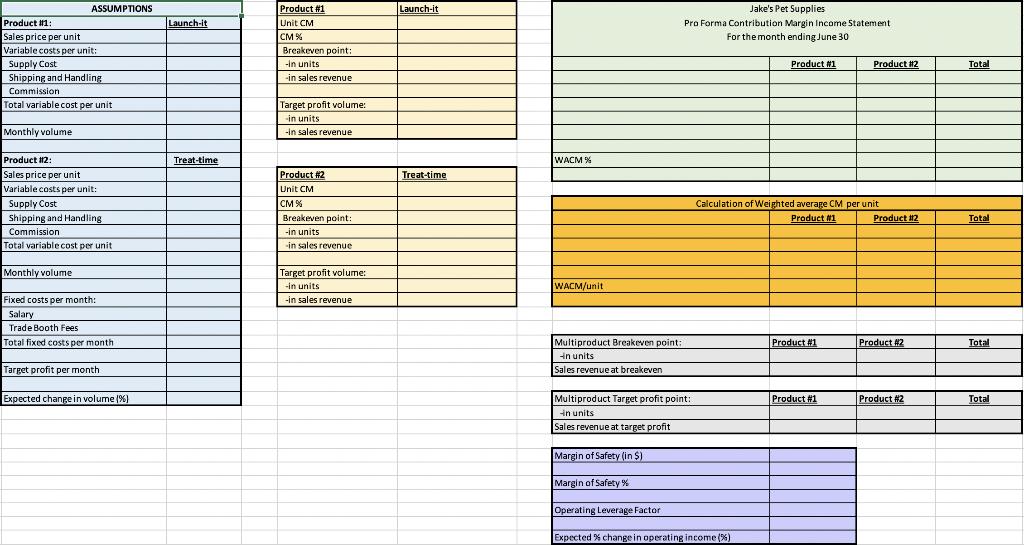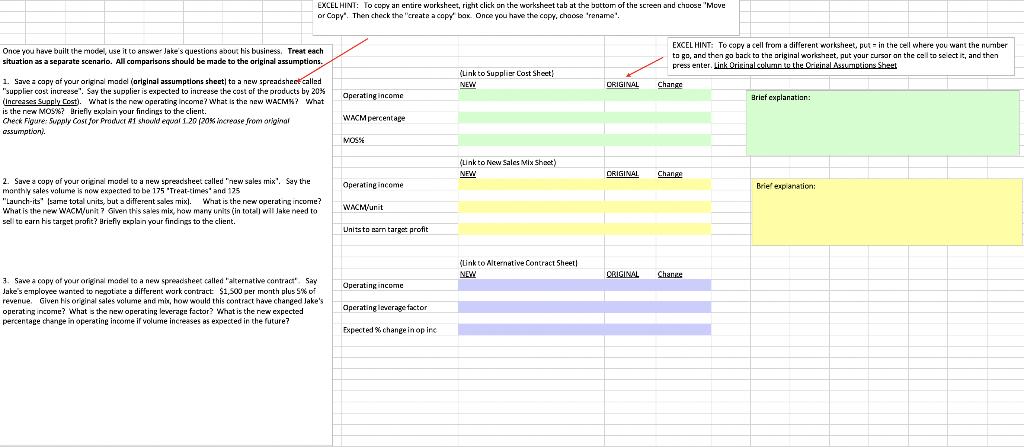Question
After taking business classes, Bob, an avid cat-lover, decided to start selling unique supplies at trade shows. He has two products: Product 1: Throw-it- a
After taking business classes, Bob, an avid cat-lover, decided to start selling unique supplies at trade shows. He has two products:
Product 1: "Throw-it"- a tennis ball thrower that will sell for $10.
Product 2: "Bake-time"- an automatic treat dispenser that releases a treat when the dog places his paw on the pedal. The treat dispenser will sell for $30.
Costs: Bob has hired an employee to work the trade show booths. The work contract is $1,000 per month plus a commission equal to 10% of revenue. Bob will also spend $500 per month on trade-show entry fees. Bob is purchasing the products from a supplier in Mexico. throw-its cost $1 each; bake-times cost $7 each. Shipping and handling on the throw-its will cost $2 each; Shipping and handling on the bake-times, which are heavier, will cost $8 each. The shipping and handling costs will be paid by bob, not the customer.
Assume bob expects to sell 200 throw-its and 100 bake-times during his first month of operations (June).
bobs financial goal is to earn an operating income of $8,000 per month. He believes volume may grow at a rate of 5% a month.
1) Complete the assumptions (blue box) based on the data about bobs business. Identify and list all variable costs separately and all fixed costs separately before finding the total for each type of cost.
2) Complete the Product Analysis (yellow boxes) assuming bob ONLY sells either Product #1 (throw-its) OR Product #2 (bake-times).
Check figures: B/E Product #1 = 250 units; B/E Product #2= 125 units
3) Complete the pro forma CM Income Statement for the month of June (green box). HINT: On product line income statements such as this, the fixed costs are only listed in the total column. Make sure you also show the totals for all other line items. Finally, calculate the overall WACM% for the company.
Check figure: Operating income = $900 WACM% = 48%
4) Calculate the weighted average contribution margin (WACM) per unit (in the orange box).
Check figure: WACM/unit = $8.00
5) Use the WACM/unit to calculate the TOTAL number of units needed to break even (TOTAL column in the first gray box). THEN, calculate the number of EACH type of product needed to break even. Finally, calculate the sales revenue associated with this volume for EACH product, and then the sales revenue to breakeven in total.
Check figures: B/E Product #1 = 125; B/E Product #2= 63


ASSUMPTIONS Product #1 Launch-it Jake's Pet Supplies Product I1: Launch-it Unit CM Pro Forma Contribution Margin Income Statement CM % Breakeven point: -in units -in sales revenue Sales price per unit For themonth ending June 30 Variable costs per unit: Supply Cost Product #1 Product 12 Total Shipping and Handling Commission Target profit volume: in units Total variable cost per unit Monthly volume -in sales revenue Product i12: Treat-time WACM % Sales price per unit Product #2 Treat-time Variable costs per unit: Unit CM Calculation of Weighted average CM per unit Supply Cost Shipping and Handling CM % Breakeven point: |-in units -in sales revenue Product N1 Product 12 Total Commission Total variable cost per unit Monthly volume Target profit volume: -in units WACM/unit Fixed costs per month: -in sales revenue Salary Trade Booth Fees Total fixed costs per month Multiproduct Breakeven point: Hn units Product #1 Product #2 Total Target profit per month Sales revenue at breakeven Expected change in volume (%) Multiproduct Target profit point: Product #1 Product #2 Total in units Sales revenue at target profit Margin of Safety (in $) Margin of Safety % Operating Leverage Factor Expected % change in operating income (%)
Step by Step Solution
3.30 Rating (156 Votes )
There are 3 Steps involved in it
Step: 1

Get Instant Access to Expert-Tailored Solutions
See step-by-step solutions with expert insights and AI powered tools for academic success
Step: 2

Step: 3

Ace Your Homework with AI
Get the answers you need in no time with our AI-driven, step-by-step assistance
Get Started


